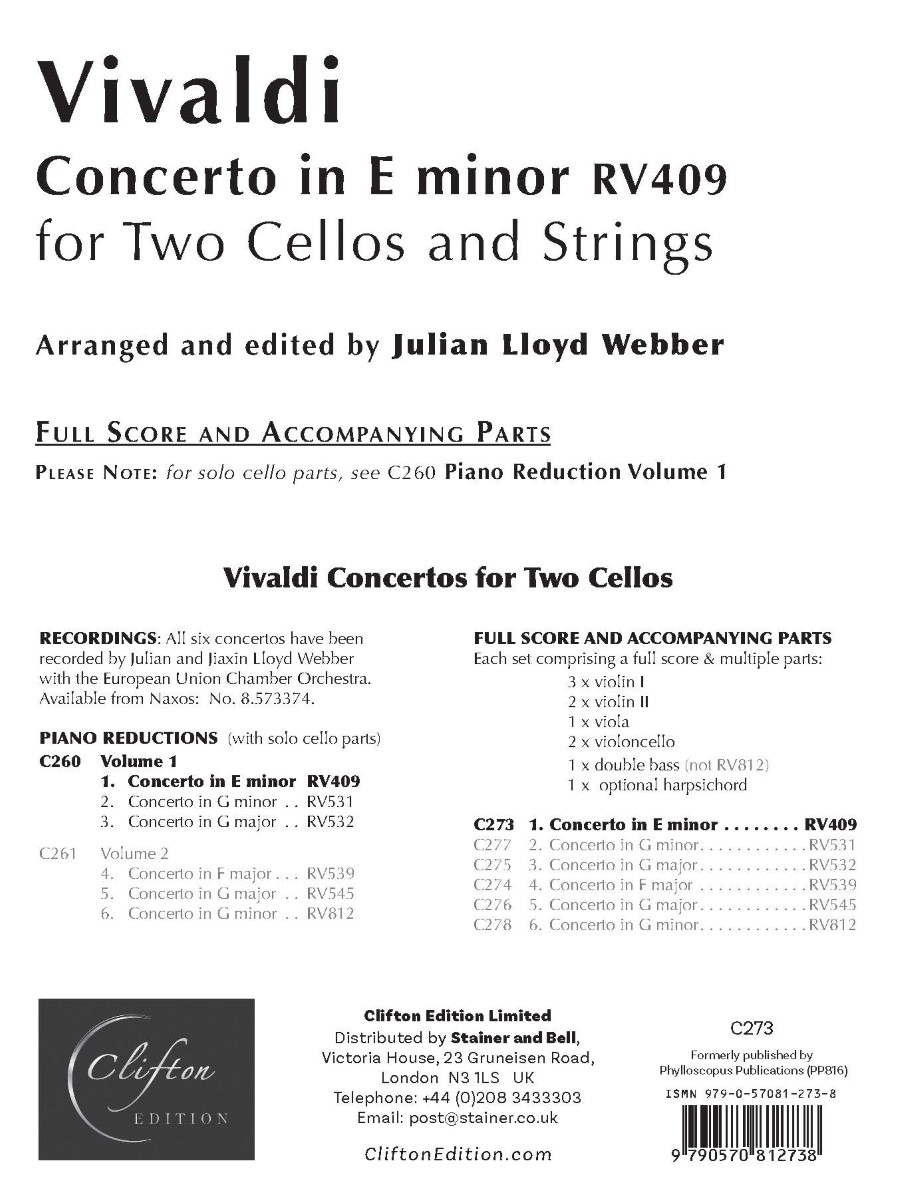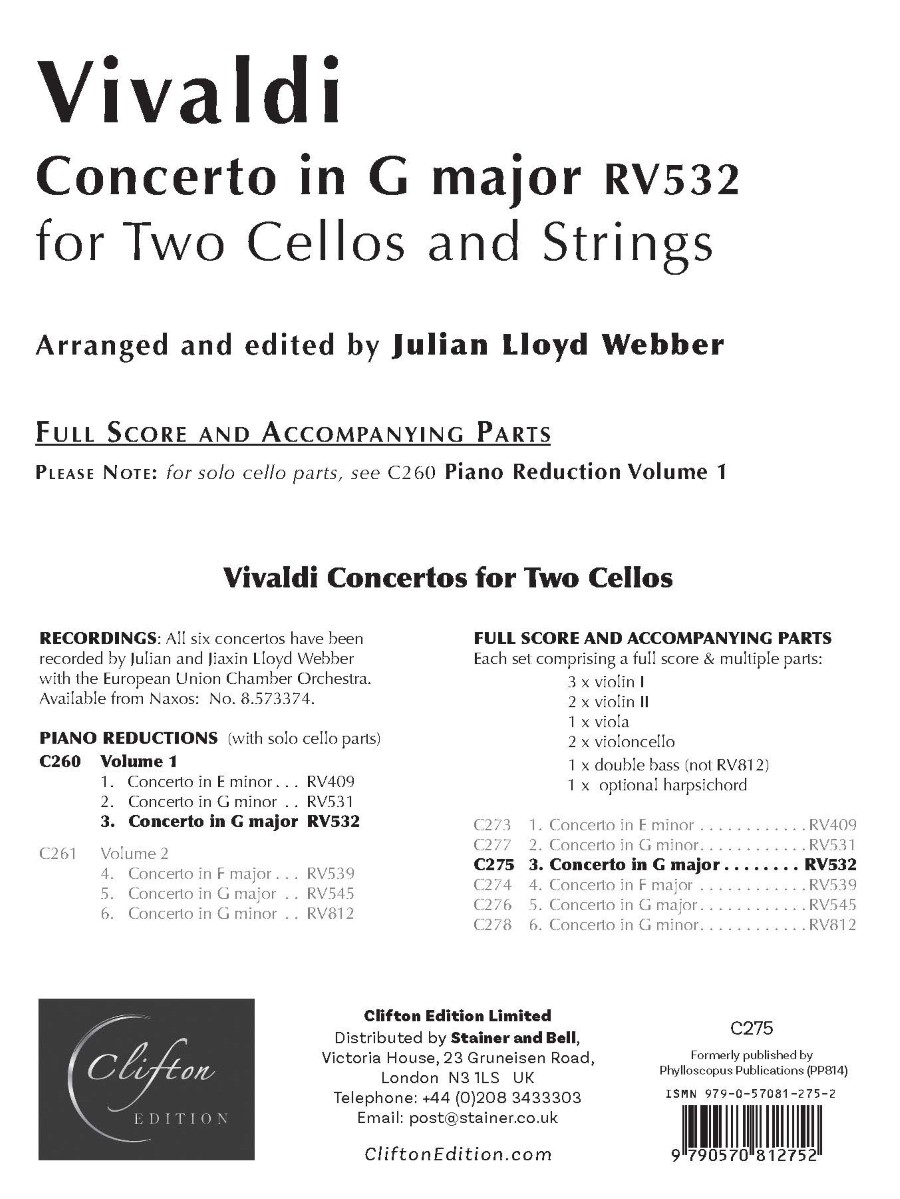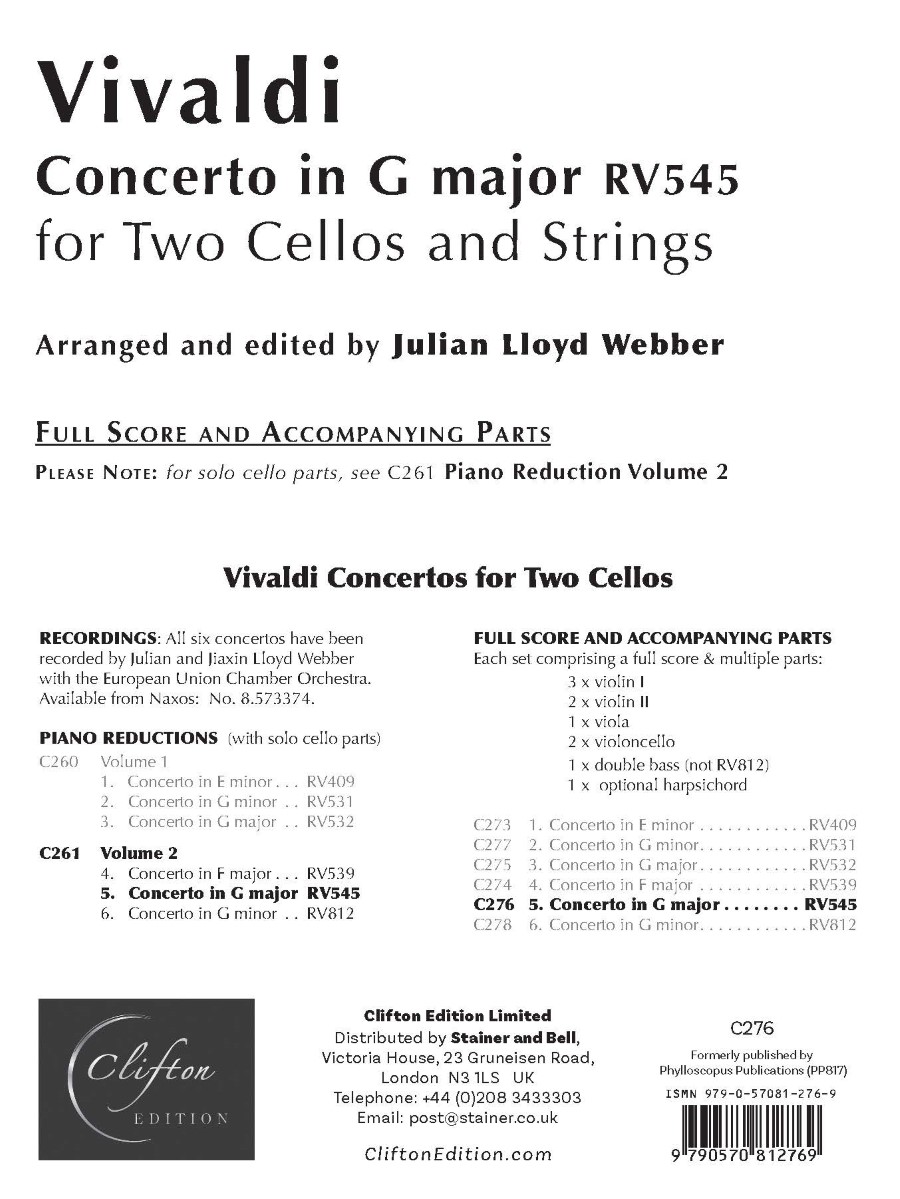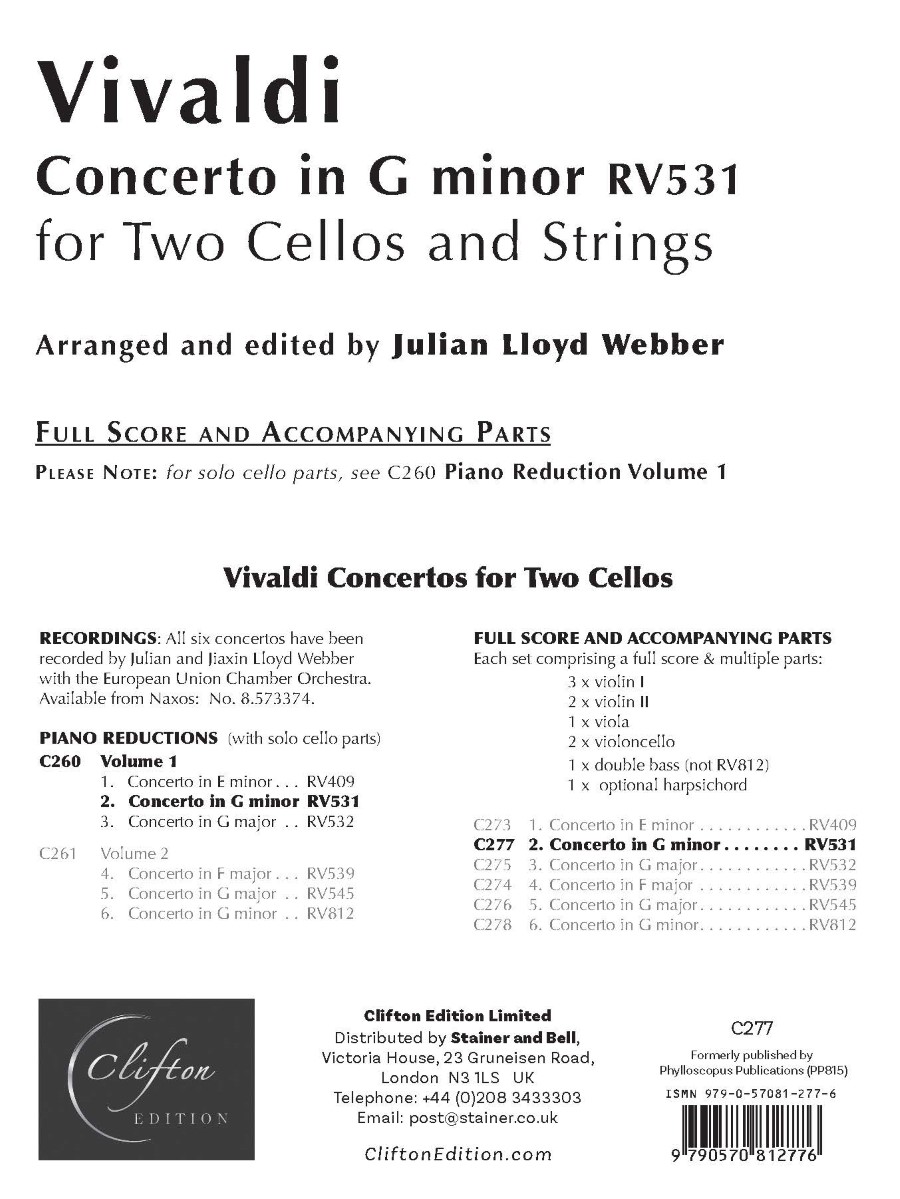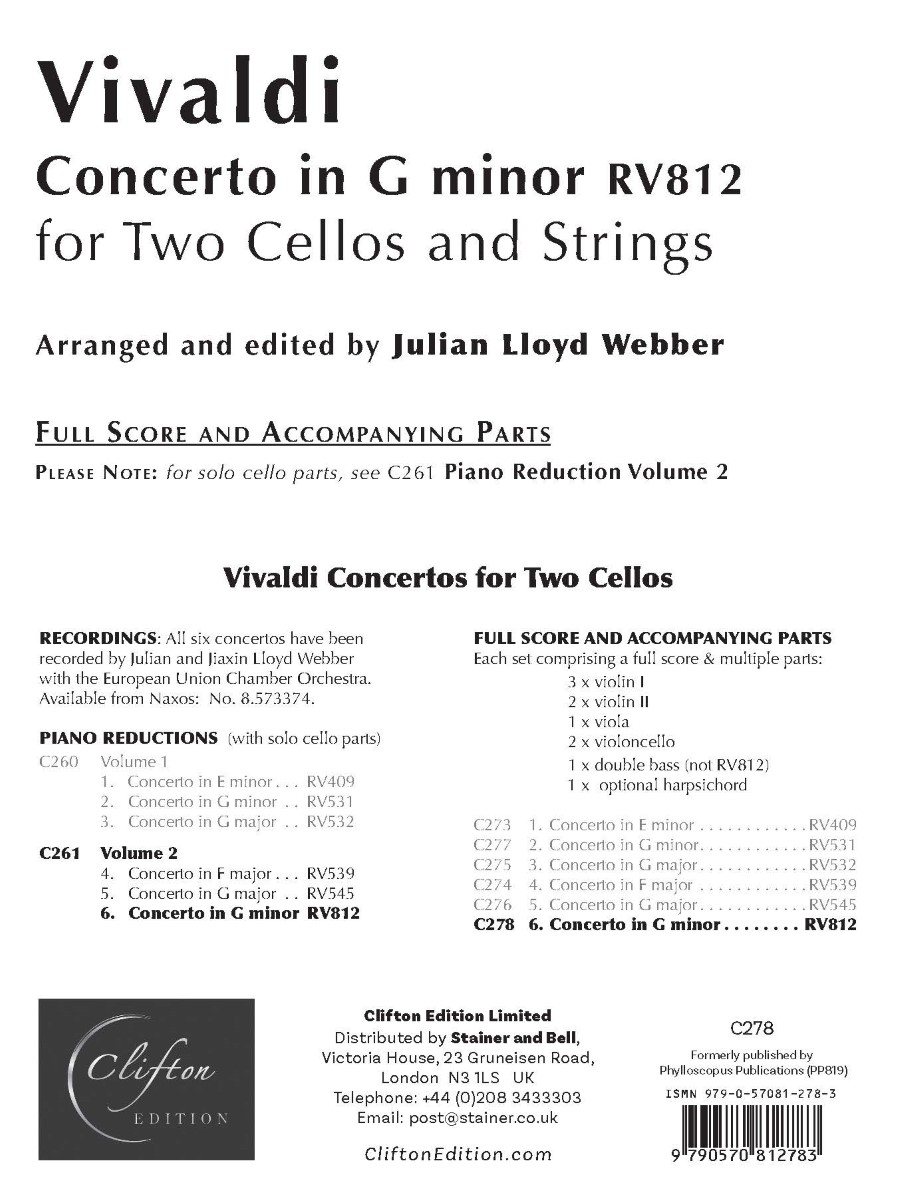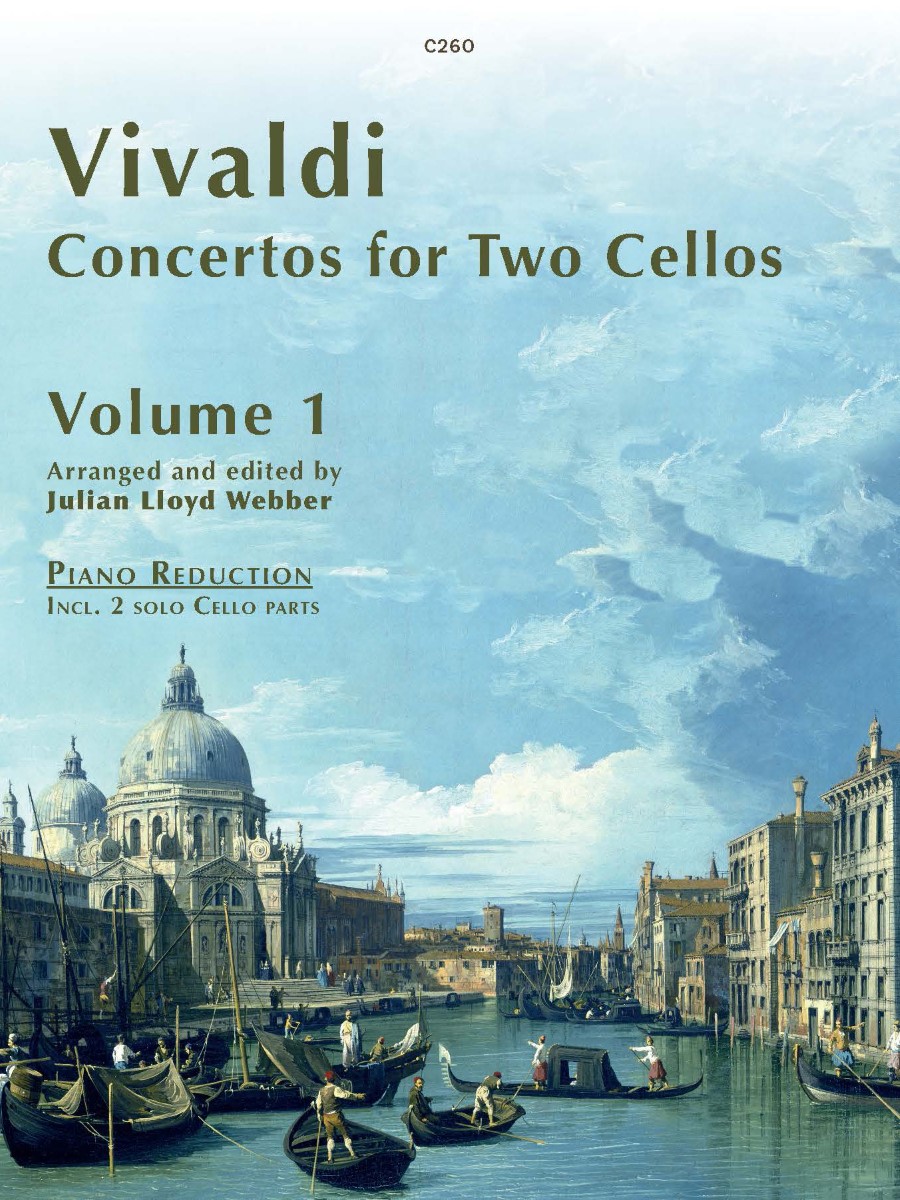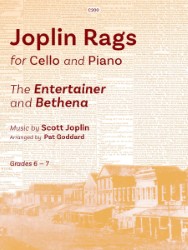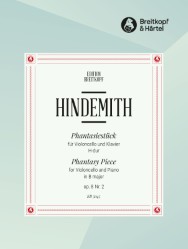Concertos for Two Cellos Volume 2, RV539, RV545 & RV812
Piano Reduction with solo cello parts
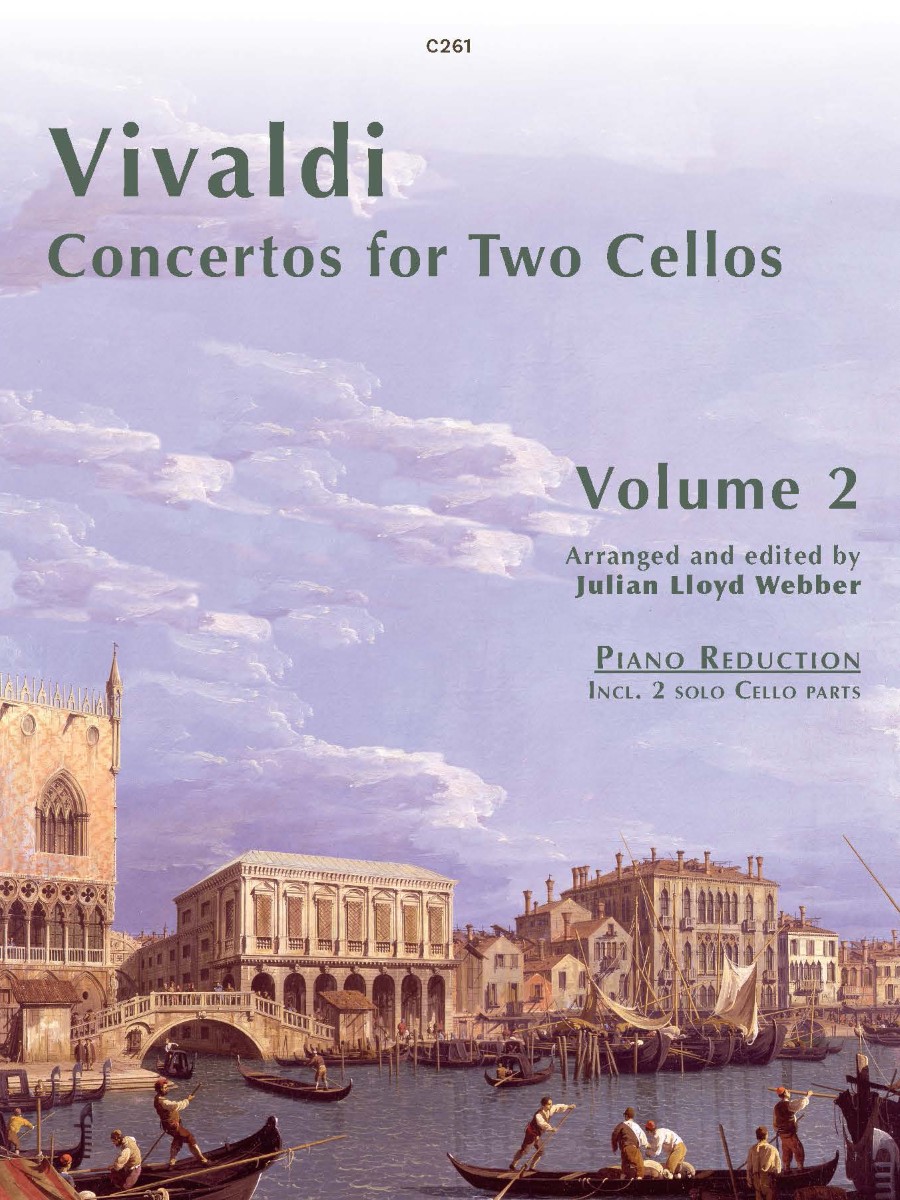
Composer: Vivaldi, Antonio
Editor: Julian Lloyd Webber
Instrumentation: 2 Cellos and Piano
Publisher:
| Product Code: | 979-0-570-81261-5 |
| ISMN: | 979-0-570-81261-5 |
| Publishers Number: | C261D |
| Series: | Vivaldi Double Cello Concertos |
| Difficulty: | Grades 6 – 8 |
| Published date:: | 20230912 |
| Language: | English |
| Page count: | 64 |
| Condition: | New |
Concerto in G Major RV545
Concerto in G minor RV812
Vivaldi’s early life was marked by his musical talent, which was evident from a young age. He began studying for the priesthood at the age of 15 and was ordained at 25. However, due to a health problem, he was given dispensation to no longer say public Masses.
Throughout his career, Vivaldi composed over 500 concertos, more than 40 operas, and numerous sacred choral works. Many of his compositions were written for the all-female music ensemble of the Ospedale della Pietà, a home for abandoned children in Venice.
Vivaldi’s influence during his lifetime was widespread across Europe, giving origin to many imitators and admirers. He pioneered developments in orchestration, violin technique, and programmatic music. Despite his success during his lifetime, Vivaldi died in poverty in Vienna on July 28, 1741.
After almost two centuries of decline, Vivaldi’s musical reputation underwent a revival in the early 20th century. Many of his compositions, once thought lost, have been rediscovered and continue to be performed and celebrated today.
Vivaldi's Concertos for Two Cellos Volume 2 contains RV539, RV545 & RV812.
Antonio Vivaldi’s Concerto in F Major, RV 539 is a delightful and rare gem…
Antonio Vivaldi’s Concerto in F Major, RV 539 is a delightful and rare gem from the Baroque era, composed for two horns, strings, and basso continuo. It’s one of the few concertos Vivaldi wrote featuring horns, showcasing his flair for vivid textures and spirited interplay. Julian Lloyd Webber has very successfully arranged this concerto for two cellos.
It follows the typical three-movement format:
Movement 1: Allegro: Bright and energetic, with lively exchanges between the horns.
Movement 2: Larghetto: A gentle, lyrical middle movement that offers a moment of calm.
Movement 3: Allegro: A brisk and joyful finale, full of rhythmic vitality.
It’s a great example of Vivaldi’s ability to balance virtuosity with charm.
Antonio Vivaldi’s Concerto in G major, RV 545 is a charming and relatively rare gem in his vast catalogue of concerti. Originally scored for oboe, bassoon, strings, and basso continuo, it showcases a delightful interplay between the two soloists.
This concerto follows the traditional three-movement format:
Movement 1: Andante molto: A graceful and flowing opening with lyrical exchanges between oboe and bassoon.
Movement 2: Largo: A slow, expressive middle movement that highlights the warm timbre of the cellos.
Movement 3: Allegro molto: A lively and spirited finale with energetic rhythms and playful dialogue.
Antonio Vivaldi’s Concerto in G minor, RV 812 is a captivating work was originally scored for oboe, cello, strings, and basso continuo. It’s part of the Harrach Collection and showcases Vivaldi’s flair for expressive dialogue between solo instruments.
Movement 1. Allegro: A lively and dramatic opening that sets the tone with energetic interplay between the soloists.
Movement 2. Largo: A slower, lyrical section often featuring a solo bassoon, adding a mellow, introspective contrast. Julian Lloyd Webber’s expressive cello phrasing captures this beautifully.
Movement 3: Allegro cantabile: A graceful and song-like finale that blends virtuosity with charm.
About Julian Lloyd Webber:
Julian Lloyd Webber is described by Strad magazine as ‘the doyen of British cellists’ and is widely regarded as one of the finest musicians of his generation. He enjoys one of the most creative and successful careers in classical music today. As founder of the British Government’s In Harmony programme and the Chair of Sistema England, he continues to promote personal and community development in some of England’s most deprived areas.
At the age of sixteen Julian Lloyd Webber won a scholarship to the Royal College of Music and he completed his studies in Geneva with the renowned cellist, Pierre Fournier. Since then he has collaborated with an extraordinary array of musicians from Lord Yehudi Menuhin, Lorin Maazel and Sir Georg Solti to Elton John and Stéphane Grappelli.
Julian Lloyd Webber has premiered more than sixty works for cello and he has inspired new compositions from composers as diverse as Joaquin Rodrigo and Sir Malcolm Arnold to Philip Glass, James MacMillan and Eric Whitacre. He has also recorded several highly successful CDs including Cello Song, Unexpected Songs and — together with his wife Jiaxin — A Tale of Two Cellos. His recording of Elgar’s Cello Concerto was chosen as “the finest ever” by BBC Music Magazine and he has also recorded concertos by Dvořák, Saint-Saëns, Lalo, Rodrigo and Philip Glass among many others.
A recording, featuring Julian Lloyd Webber, is now available from Naxos: CD cat. No. 8573374.
R.R.P £19.95
Our Price: £16.96
Digital Download – PDF
Shipping costs: No shipping
Other books in this series
You might also like
-
2 Joplin Rags for Cello and Piano
£8.08 -
2 Pieces for Cello and Piano
£16.00 -
2 Pieces Op. 5
£14.00 -
3 Pieces for Violoncello and Piano Op. 8
£15.00

